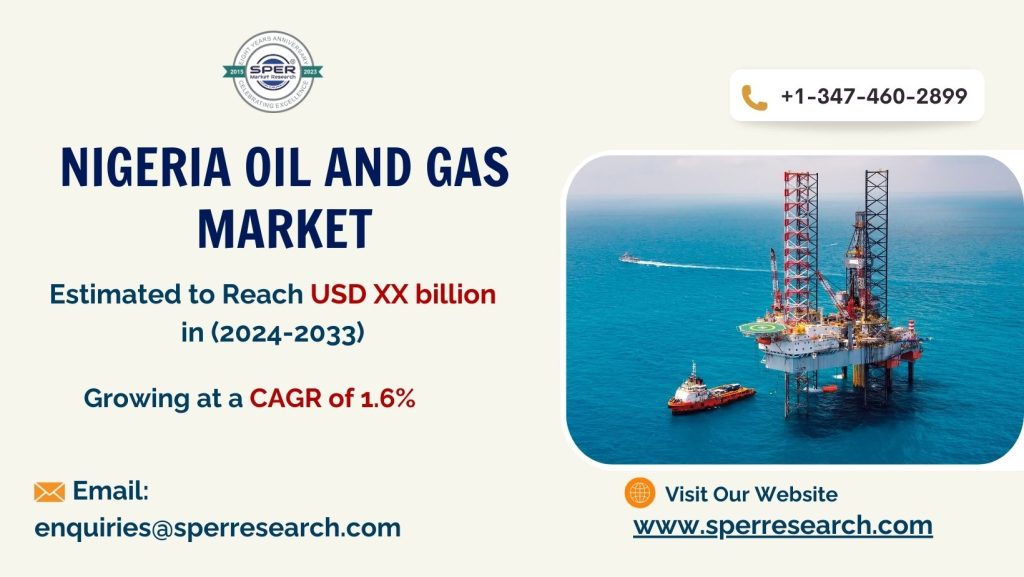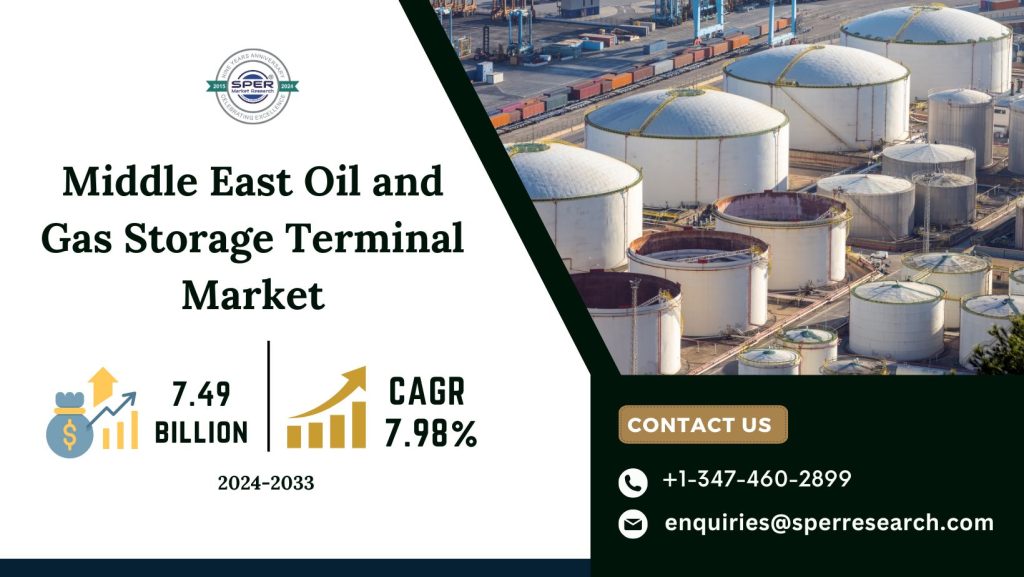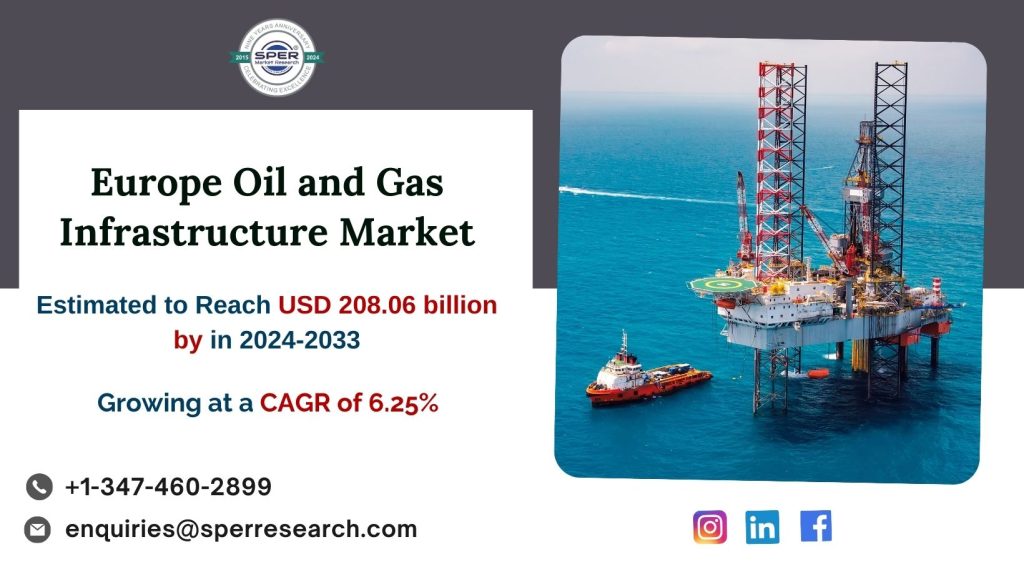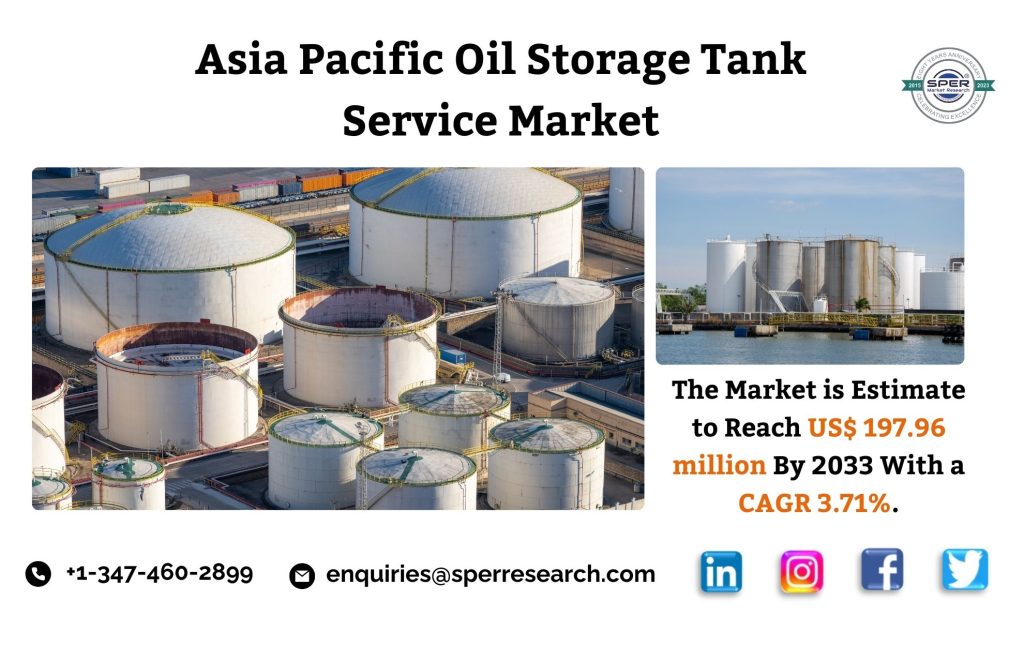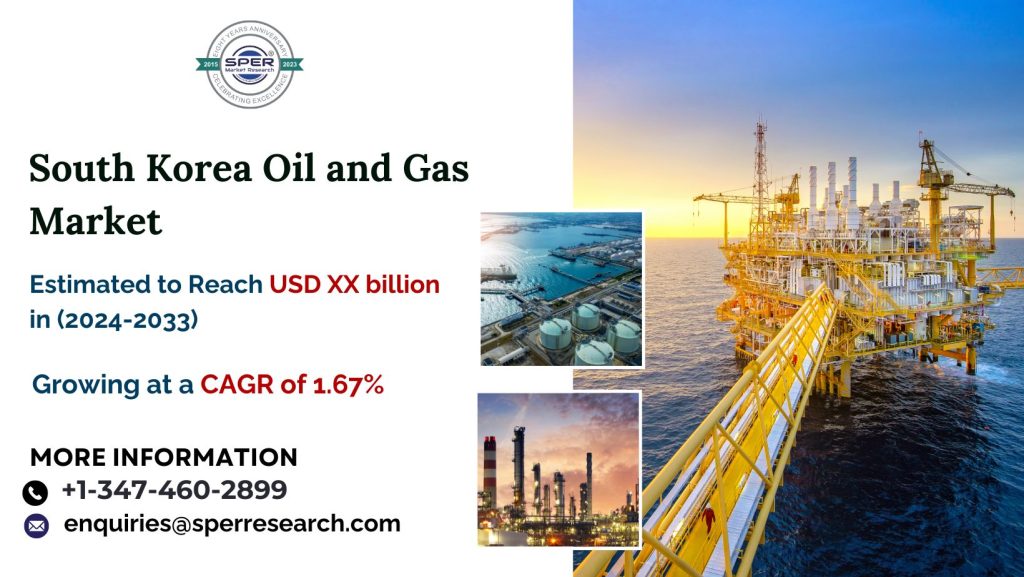Oil and gas refer to natural resources found beneath the Earth’s surface, primarily used as energy sources. Oil, a liquid hydrocarbon, is extracted from crude oil reservoirs and refined into various products, including gasoline, diesel, jet fuel, and petrochemicals. Natural gas, primarily composed of methane, is found in gas fields or alongside oil deposits and is used for electricity generation, heating, and industrial applications. These resources are crucial for powering global economies, industries, and transportation. The oil and gas industry encompasses exploration, extraction, refining, distribution, and consumption. It is vital for energy security, economic growth, and industrial development but also faces challenges such as environmental concerns, price volatility, and the transition to renewable energy sources for sustainability.
According to SPER Market Research, ‘Nigeria Oil and Gas Market Size- By Type, By Extraction, Regional outlook, Competitive Strategies and Segment Forecast to 2033’ states that the Nigeria Oil and Gas Market is estimated to reach USD XX billion by 2033 with a CAGR of 1.6%.
Drivers: The drivers of Nigeria’s oil and gas market are shaped by several key factors, which include the country’s vast natural resource reserves, government policies, global demand for energy, and investments in infrastructure and technology. Government policies play a critical role in shaping the market by encouraging investment in oil and gas exploration, production, and refining, while aiming to improve transparency, reduce regulatory bottlenecks, and attract foreign investments. Additionally, the increasing focus on natural gas development is another vital factor. Technological advancements in exploration and extraction methods are also enhancing Nigeria’s ability to tap into previously inaccessible oil and gas reserves. Lastly, regional factors such as the security situation in the Niger Delta and global trends in the energy transition towards cleaner sources, influence the growth and challenges of the oil and gas market in Nigeria.
Restraints: The Nigerian oil and gas market faces several significant restraints that hinder its growth and stability. One of the primary challenges is the country’s overdependence on oil and gas exports, which makes the economy vulnerable to fluctuations in global oil prices. Additionally, the security disrupts production and affects infrastructure, leading to supply shortages and increased operational costs. The regulatory environment faces challenges with inconsistent policy implementation, corruption, and bureaucratic inefficiencies, which hinder foreign investment. There is also a lack of adequate infrastructure which forces Nigeria to import refined petroleum products at higher costs, affecting profitability and energy security. Furthermore, environmental concerns have led to increasing pressure from both local communities and international organizations for more sustainable practices.
Request For Free Sample Report @ https://www.sperresearch.com/report-store/nigeria-oil-and-gas-market.aspx?sample=1
Impact of COVID-19 on Nigeria Oil and Gas Market
The COVID-19 pandemic had a profound impact on the Nigerian oil and gas market, significantly disrupting both production and revenue generation. The global decline in oil demand due to lockdowns, travel restrictions, and reduced industrial activities which negatively affected Nigeria’s oil-dependent economy. Nigeria experienced a severe decrease in export revenues, leading to fiscal deficits and economic instability. Additionally, the pandemic delayed critical projects in exploration, production, and infrastructure development. Domestic consumption also decreased, as economic activities slowed down, reducing demand for refined petroleum products. The pandemic also disrupted the supply chain, affecting the delivery of equipment, spare parts, and materials necessary for oil production and maintenance.
Nigeria Oil and Gas Market Key Players:
The Nigerian market for oil and gas is dominated by the TeaNiger Delta region in Nigeria since it is the most productive oil region and is home to most of its oil and gas reserves. Major players in the market are Chevron Corporation, CNOOC International Ltd., Lekoil Nigeria Limited, Nigerian National Petroleum Corporation, etc.
For More Information, refer to below link: –
Nigeria Oil and Gas Market Share
Related Reports:
Follow Us –
LinkedIn | Instagram | Facebook | Twitter
Contact Us:
Sara Lopes, Business Consultant — USA
SPER Market Research
+1–347–460–2899
